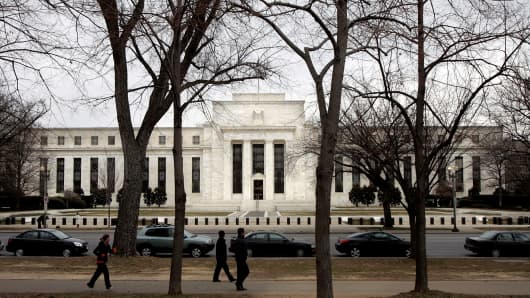Investors searching for clarity this week from Fed officials on the timeline of the winding down of U.S. monetary stimulus shouldn't hold their breath, said Bank of America Merrill Lynch (BofAML).
According to a report from the bank, the Federal Open Market Committee (FOMC), which meets later on Tuesday on monetary policy and will announce a decision on Wednesday, is yet to make up its mind on when to pull back the $85 billion a month bond-buying program.
"We believe the FOMC is still making up its mind on tapering, and thus, will not strongly signal a September start at the July 30-31 meeting. The FOMC will likely need to lower its growth and inflation forecasts in September, which complicates the decision to taper, in our view," economist Michael S. Hanson and rates strategist Priya Misra at the bank wrote in a note published late Monday.
(Read more: Why Bernanke's 'open mouth' operations beat policy moves)
The central bank's growth forecast for 2013 stands at 2.3-2.6 percent, and its outlook for inflation at 0.8-1.2 percent.
"With the Fed likely providing an ambiguous message this month, markets may rethink whether September tapering really is a done deal," Hanson and Misra, who expect tapering to start in December, said.





